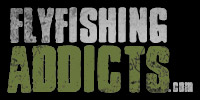REALTIME FLOWS  U. Kern: n/a cfs
U. Kern: n/a cfs
 L. Kern: 1341 cfs
L. Kern: 1341 cfs
 E.W: 312 cfs
E.W: 312 cfs
 U. Owens: 108 cfs
U. Owens: 108 cfs  L. Owens: 496 cfs 09/02/19 1:15 PM PST
L. Owens: 496 cfs 09/02/19 1:15 PM PST
Catch and Release Techniques / Do's and Don'ts
37 posts
• Page 1 of 3 • 1, 2, 3
Catch and Release Techniques / Do's and Don'ts
Recently I was solicited by the new site owner to write a new handling techniques article that offers an overview of good catch and release methods. I agreed to do so. In the base of the article I'll also go over some of the more common issues that make up the bulk of what we would consider to be poor catch and release methods and how to avoid them.
I know from watching many of you release your trout over the years that there are many different catch and release styles out there. Some touch the trout, others don't. Some use barbless flies, some don't. Some use nets, etc. I'd like to cover some of the better, conservation-minded methods in the article.
I thought it would be really cool if I could get you guys to offer input on what methods you use and why you prefer them. I'd also like to hear from you regarding what you feel are poor or sub-standard release or handling methods. I've always felt that we could all use a little improvement and occassional refresher course from time to time, so why not let everyone have a say in what goes in it?
Please feel free to respond here and offer whatever you've got. Keep it on this thread so others can read it and make additional comments on it where appropriate. When it comes to continued survival of the trout, it's all got a place here.
So this is going to be OUR article. OUR information based on OUR experiences. I'll take care of writing the manuscript, the proofing and any pictures that can be associated with the body of the article. Then it will be up to the bosses to get the thing on here. Since I'm not computer savvy, I won't have a hand in that portion of it. But I'll make sure that the article contains OUR information, and that it reads just the way we would want it to. I'm totally looking forward to reading your comments, suggestions and stories, then putting it into words.
Many thanks for your time helping with this.
Mike
I know from watching many of you release your trout over the years that there are many different catch and release styles out there. Some touch the trout, others don't. Some use barbless flies, some don't. Some use nets, etc. I'd like to cover some of the better, conservation-minded methods in the article.
I thought it would be really cool if I could get you guys to offer input on what methods you use and why you prefer them. I'd also like to hear from you regarding what you feel are poor or sub-standard release or handling methods. I've always felt that we could all use a little improvement and occassional refresher course from time to time, so why not let everyone have a say in what goes in it?
Please feel free to respond here and offer whatever you've got. Keep it on this thread so others can read it and make additional comments on it where appropriate. When it comes to continued survival of the trout, it's all got a place here.
So this is going to be OUR article. OUR information based on OUR experiences. I'll take care of writing the manuscript, the proofing and any pictures that can be associated with the body of the article. Then it will be up to the bosses to get the thing on here. Since I'm not computer savvy, I won't have a hand in that portion of it. But I'll make sure that the article contains OUR information, and that it reads just the way we would want it to. I'm totally looking forward to reading your comments, suggestions and stories, then putting it into words.
Many thanks for your time helping with this.
Mike
"You can't keep a good Dr down."
Days On The Salt in 2017 - 114
Days On The Salt in 2018 - 39

Days On The Salt in 2017 - 114
Days On The Salt in 2018 - 39

-

DrCreek - Posts: 1417
- Joined: January 31st, 2008, 9:46 pm
- Location: CA
Re: Catch and Release Techniques / Do's and Don'ts
I try hard not to take the fish outta the water. Most of the time, I fail at this, but I do try. I started carrying a net to make this easier to accomplish...
I always fish barbless. A couple reasons...Primarily, if I'm always barbless, I never have to worry if the regs on a particular body of water require it or not...I got it covered. Secondly, pulling a barbed fly out of my own scalp while alone and waist deep in moving water convinced me of the benefit to carrying only barbless flies. And of course, it makes release much easier on both me and the fish.
Wet hands. Always, without fail, your hands should be wet to prevent damaging scales and removing protective slime. We all know that, but it deserves another mention.
One thing I HATE seeing is a beautiful trout covered in dirt and debris from flopping on the ground before the photo gets taken...
I always fish barbless. A couple reasons...Primarily, if I'm always barbless, I never have to worry if the regs on a particular body of water require it or not...I got it covered. Secondly, pulling a barbed fly out of my own scalp while alone and waist deep in moving water convinced me of the benefit to carrying only barbless flies. And of course, it makes release much easier on both me and the fish.
Wet hands. Always, without fail, your hands should be wet to prevent damaging scales and removing protective slime. We all know that, but it deserves another mention.
One thing I HATE seeing is a beautiful trout covered in dirt and debris from flopping on the ground before the photo gets taken...
-
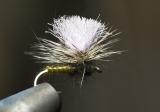
tyflier - Posts: 37
- Joined: September 4th, 2012, 10:53 am
- Location: Bishop, CA
Re: Catch and Release Techniques / Do's and Don'ts
tyflier wrote:I try hard not to take the fish outta the water. ....
One thing I HATE seeing is a beautiful trout covered in dirt and debris from flopping on the ground before the photo gets taken...
Amen.
How about a nice warm (or HOT) California summer day and the fish has been laid on a slab of granite for a photo?
Even if we will never know to what degree fish feel pain, I personally cringe and grind a good millimeter of my teeth whenever I see that. Tired of being friendly and forgiving; if a buddy can't take criticism on his fish handling techniques, I don't fish with him anymore.
So sue me,
B.
PS - YES it is one of those days.
-
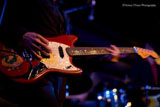
Bernard - Posts: 1413
- Joined: July 21st, 2008, 7:07 pm
- Location: Southern California - Most of the time ...
Re: Catch and Release Techniques / Do's and Don'ts
Everyone enjoys a picture of "that" fish to brag on. I personally like pictures of fish in the water. Some of the best are made using a waterproof camera set on multiple burst and catching the trout with the fly in their mouth and still under water. The fish is in his element and not starving for oxygen and you can see the fly that tempted him. They look alive and vital and the sparkles that bounce off the light through the water is amazing at times. Even better is if you catch the fish underwater and still can see the outside world of the creek and bank. Some of the folks here are masters at catching those shots and I try to emulate them.
"Tomorrow is the most important thing in life. Comes into us at midnight very clean. It's perfect when it arrives and it puts itself in our hands. It hopes we've learnt something from yesterday."
John Wayne
John Wayne
-
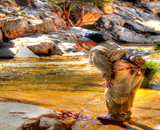
Wildman - Site Admin
- Posts: 3747
- Joined: August 17th, 2008, 2:07 pm
Re: Catch and Release Techniques / Do's and Don'ts
I’ll add my 2 cents. I use a Ketchum Release Tool, no need for a net or hemostat and no harm to the fish to fight another day.
http://www.youtube.com/watch?v=xptYPB7K ... re=related
Mark
http://www.youtube.com/watch?v=xptYPB7K ... re=related
Mark
Make Fly Fishing Great Again!
-
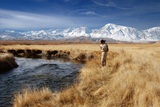
fly addict - Posts: 2560
- Joined: August 3rd, 2008, 1:57 pm
- Location: In your honey hole!
Re: Catch and Release Techniques / Do's and Don'ts
Mike, I try to never touch a fish or lift it out of the water. If I do touch a fish I always make sure to wet my hands, try not to squeez it and have it out of the water for as little time as possible. I never put my hands or fingers in the fishes gills or hold a fish my it's mouth. Never let a fish flop around on dry ground or on rocks and let it get covered with dirt, grass or leaves unless you intend to keep the it. I always try and pinch down the barb beacuse this allows for a much easier release. I like to keep the fish in the water, run my hand down the leader and used my hemos to remove the fly. If a fly takes the fly deep in the throat, I will cut the leader at the mouth and let the fish go. I just think that touching a fish as little as possible and trying not to have it out of the water will give it a good chance to fight another day.
Lanny
Lanny
- Gila Trout
- Posts: 116
- Joined: May 19th, 2010, 4:29 pm
- Location: Corona, Ca.
Re: Catch and Release Techniques / Do's and Don'ts
Once hooked, I make every effort to land the fish as quickly as possible. If releasing the fish is part of the game, then not wearing the fish out and building up lactic acid in its muscles has to be a part of it as well. Sometimes the best place to cast from is the worst place to be when landing the fish. I try to keep that in mind in when fishing.
I always carry a net. Not because the fish's size make it necessary but because it allows me to keep the fish in the water while doing whatever I need to do from removing the hook to getting ready for a picture. It reduces to amount of hands on time as well. I always make sure the net is wet before it touches the fish. The net…I use measure nets which are made of a nylon jersey like material (no knots to scrape at the fish's slime). Rubber bag nets are likely a bit better though.
Wet hands. Period.
Trout, panfish and most bass fishing is done with barbless hooks. This is harder to do with larger hooks of course but I still try.
Photos? Sure. Often. I keep the fish in the water till the last moment possible. If taking a pic for someone else I try to get the camera focused before they lift the fish from the water. Actually, I do that on my own as well by focusing the camera on the hand I will grab the fish with and then lifting the fish to the same place my hand was for focusing. The point is to always minimize the fish's time out of water. Never lay a fish on the ground.
Revive the fish if it seems in the slightest bit worn out. There will always be times when our best intentions don't give us the results we seek. I try to be aware of the condition of the fish.
These are all learned things. Some from articles on fish photos, others from posts made by others on forums. Some were practically yelled at me at one point or another. I am sure some will change in the future as new information comes 'round.
Water temps. Personally, I draw the limit at 70° for trout (often at 68°). As the water gets warmer the dissolved oxygen levels drop. Lower oxygen levels make it even harder for a fish to recover.
I always carry a net. Not because the fish's size make it necessary but because it allows me to keep the fish in the water while doing whatever I need to do from removing the hook to getting ready for a picture. It reduces to amount of hands on time as well. I always make sure the net is wet before it touches the fish. The net…I use measure nets which are made of a nylon jersey like material (no knots to scrape at the fish's slime). Rubber bag nets are likely a bit better though.
Wet hands. Period.
Trout, panfish and most bass fishing is done with barbless hooks. This is harder to do with larger hooks of course but I still try.
Photos? Sure. Often. I keep the fish in the water till the last moment possible. If taking a pic for someone else I try to get the camera focused before they lift the fish from the water. Actually, I do that on my own as well by focusing the camera on the hand I will grab the fish with and then lifting the fish to the same place my hand was for focusing. The point is to always minimize the fish's time out of water. Never lay a fish on the ground.
Revive the fish if it seems in the slightest bit worn out. There will always be times when our best intentions don't give us the results we seek. I try to be aware of the condition of the fish.
These are all learned things. Some from articles on fish photos, others from posts made by others on forums. Some were practically yelled at me at one point or another. I am sure some will change in the future as new information comes 'round.
Water temps. Personally, I draw the limit at 70° for trout (often at 68°). As the water gets warmer the dissolved oxygen levels drop. Lower oxygen levels make it even harder for a fish to recover.
How do you tie the fly to your hooks without killing them with the thread? I keep cutting them in half.
-
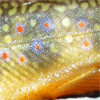
darrin terry - Posts: 3369
- Joined: July 26th, 2008, 8:47 am
- Location: Locale: NoCal
Re: Catch and Release Techniques / Do's and Don'ts
Depending on the circumstances, I will do one of a few things. For example if I decide to take a fish pic (I don't take shots of every fish I catch in a given trip. Just like I dont post reports from all of my trips for example I went out this past Sunday, fished in the morning and went shooting in the afternoon and no report.) I will always wet my hand if I use it to hold them for the shot. Typically I do this with smaller fish. With larger fish I most often will take a shot of them in my net. Now, sometimes I might net a small fish or tail a larger one, it just depends on circumstances. If it takes me a little longer to land a fish or something happens such as it getting caught in the leader etc, I never take a pic of that fish no matter what its size is. I always pinch my barbs down when fishing as well unless I am fishing for fish to keep; although it is not too often that I choose to do that. Not because I think it is horrible to keep fish as long as it is legal (and you do not waste them) but I honestly don't always feel like eating fish. Given the frequency that I hit the water, if I always kept my limit, I would have more fish than I would ever eat (plus cleaning them sucks)
-

Sasha - Posts: 3885
- Joined: July 11th, 2008, 10:42 pm
- Location: The 208
Re: Catch and Release Techniques / Do's and Don'ts
These days most of the trout I catch and release are Sea Trout and I still try to release them as I've been doing for years which is to grab the shank of the hook either by hand or with a mechanical device such as hemostats and gently shake the fish loose. I use barbless hooks and by keeping the fish in the water I can release it with as little effort as needed. If the fish is not lip hooked then I will lift it out and remove the hook with hemostats and quiockly release it back into the water. I've stopped taking pictures for the reasons stated in the other posts and I don't feel that I need to prove I caught the fish by displaying the pic of it. If I decide to keep a fish (rare) then I will take a pic or if it's really a trophy then I might take a pic and release it as quick as possible.
- Barrie Mann
- Posts: 271
- Joined: July 14th, 2008, 1:37 pm
- Location: New Smyrna Beach, Florida
Re: Catch and Release Techniques / Do's and Don'ts
If you use a net, use the right net. Avoid hard nylon or nets that are knotted, even kotted soft cotton. They do a great job of removing the protective coating on a fish, especially Trout.
The netting Greg uses on his nets are perfect for protecting fish. Plus that type of net material/ configuration also allows for less tangles with fish and fly making the release process that much faster.
Pete
The netting Greg uses on his nets are perfect for protecting fish. Plus that type of net material/ configuration also allows for less tangles with fish and fly making the release process that much faster.
Pete
-

Pete - Posts: 840
- Joined: May 28th, 2009, 12:30 pm
- Location: Central Coast of Ca.
Re: Catch and Release Techniques / Do's and Don'ts
I cut the shanks off my flies. It's all about the take. Zero mess.
Kind of like being in a relationship and flirting with all the girls in the office. So much so that you know you could, but obviously you don't pull the trigger. Sporting life, gentlemen.
Kind of like being in a relationship and flirting with all the girls in the office. So much so that you know you could, but obviously you don't pull the trigger. Sporting life, gentlemen.
"Whenever I see a photograph of some sportsman grinning over his kill, I am always impressed by the striking moral and aesthetic superiority of the dead animal to the live one."
-Edward Abbey
-Edward Abbey
-

anacrime - Posts: 1385
- Joined: April 20th, 2008, 5:16 pm
- Location: Denver, CO
Re: Catch and Release Techniques / Do's and Don'ts
anacrime wrote:I cut the shanks off my flies. It's all about the take. Zero mess.
Kind of like being in a relationship and flirting with all the girls in the office. So much so that you know you could, but obviously you don't pull the trigger. Sporting life, gentlemen.
Very cool, Shane. I do the same thing on my local creeks when temps are too high. Also throw shank-less to our local sippers during the winter on occasion.
Randy
Always looking for brownie points
-

Rollincast - Posts: 193
- Joined: July 25th, 2008, 9:50 am
- Location: Strathmore, CA
Re: Catch and Release Techniques / Do's and Don'ts
Some of my thoughts on the matter to assist the newer fly fisherman...
First the obvious - hands wet at all times when handling fish. The slime on a trout is it's protective barrier. Dry hands, grass, dirt, hot rocks, etc.. that come in contact with the flesh is bad...
Bring the fish in quickly. A small or large fish can usually, barring certain conditions, be brought in more quickly than they usually do. Two reasons come to mind on why people play the fish out too long:
1)You haven't caught a fish in a long while and want to "play" the fish or you just want to see the fish do multiple runs and watch your line go out hoping you get to say "he took me to the backing a few times" Legit, awesome! but knowing your drag helps..
2) Know the limitations of your tippet. Use the largest tippet (and strongest tippet - I swear by Frog Hair for invisibility on the FC, suppleness, knot holding superiority and diameter to strength ratio ) for the conditions.
Again, you can get the fish to net quicker, thus not exhausting the fish and possible aftershock issues and lost fish with flies and tippet swimming around afterwards.
Fish in the water as much as possible, pics are cool, we all enjoy seeing them, but most of the staged shots with the fish in front of the fisherman and the shot taken by the friend end up out of the water much longer than what was originally intended, no? We all make mistakes when we try to capture the "big one" and that is to be expected but keep the photos to a minimum and fish pics more in the water/underwater.. Don't be obsessed with thinking you have to capture all your fish. Very rare circumstances are we in a position to get a photo of the "fish of the trip" anyways.
Barbless hooks, always. Very little difference the barb on a small fly makes anyways. If you keep the pressure on and rod tip up you will keep your fish. Either tie or by barbless or use the hemos to bend back the barb prior to using.
I am looking into a hook remover such as the ketchum release that fly addict provided the link to. Most flies I can get out no problem by grabbing near the eyelet or shank of the fly or using hemostats to grab the fly shank but my recent trip to the San Juan River, NM where you are using micro midges, it was very difficult to remove as the flies were so small #24 - #28 as even a small hemostat was too big. If someone has a solution please let me know as I am always looking to learn better techniques...
Warmer 70+ water temps make trout more lethargic and recovery time for the fish is much longer. Kinda like we feel going climbing out of a canyon on a hot summer day....
Nets. Carry one always so you can land and properly remove the hook and spend the extra money for one with the "ghost" style net material or similar. Better for contact with the fish and virtually no issues with getting your fly tangled and hooked in the net material. They sell the netting separately and you could make your own out of saplings, better yet step up and support Greg and custom order the most beautiful and finest nets available! http://www.sierra-nets.com (shameless plug )
)
When all possible release the fish gently. If a fish is lethargic when you go to release it or it turns on it's side, you need to hold the fish up and get some water flowing into its gills. back and forth. A fish that rolls on it's side means it's air bladder is empty and needs to be filled. This is how a fish maintains its equilibrium and stays upright. Again, wait till the fish can swim away normally on its own...
Most all of these suggestions have been discussed many times but if you are practicing catch and release, Photos and over handling fish I think are the biggest culprits. We all like to remember our fish but please keep it to a minimum and when the timing is not right to take that shot because you or your friend is 50 yards away forgo the shot and you will have the fish for life in your memories.....
First the obvious - hands wet at all times when handling fish. The slime on a trout is it's protective barrier. Dry hands, grass, dirt, hot rocks, etc.. that come in contact with the flesh is bad...
Bring the fish in quickly. A small or large fish can usually, barring certain conditions, be brought in more quickly than they usually do. Two reasons come to mind on why people play the fish out too long:
1)You haven't caught a fish in a long while and want to "play" the fish or you just want to see the fish do multiple runs and watch your line go out hoping you get to say "he took me to the backing a few times" Legit, awesome! but knowing your drag helps..
2) Know the limitations of your tippet. Use the largest tippet (and strongest tippet - I swear by Frog Hair for invisibility on the FC, suppleness, knot holding superiority and diameter to strength ratio ) for the conditions.
Again, you can get the fish to net quicker, thus not exhausting the fish and possible aftershock issues and lost fish with flies and tippet swimming around afterwards.
Fish in the water as much as possible, pics are cool, we all enjoy seeing them, but most of the staged shots with the fish in front of the fisherman and the shot taken by the friend end up out of the water much longer than what was originally intended, no? We all make mistakes when we try to capture the "big one" and that is to be expected but keep the photos to a minimum and fish pics more in the water/underwater.. Don't be obsessed with thinking you have to capture all your fish. Very rare circumstances are we in a position to get a photo of the "fish of the trip" anyways.
Barbless hooks, always. Very little difference the barb on a small fly makes anyways. If you keep the pressure on and rod tip up you will keep your fish. Either tie or by barbless or use the hemos to bend back the barb prior to using.
I am looking into a hook remover such as the ketchum release that fly addict provided the link to. Most flies I can get out no problem by grabbing near the eyelet or shank of the fly or using hemostats to grab the fly shank but my recent trip to the San Juan River, NM where you are using micro midges, it was very difficult to remove as the flies were so small #24 - #28 as even a small hemostat was too big. If someone has a solution please let me know as I am always looking to learn better techniques...
Warmer 70+ water temps make trout more lethargic and recovery time for the fish is much longer. Kinda like we feel going climbing out of a canyon on a hot summer day....
Nets. Carry one always so you can land and properly remove the hook and spend the extra money for one with the "ghost" style net material or similar. Better for contact with the fish and virtually no issues with getting your fly tangled and hooked in the net material. They sell the netting separately and you could make your own out of saplings, better yet step up and support Greg and custom order the most beautiful and finest nets available! http://www.sierra-nets.com (shameless plug
 )
) When all possible release the fish gently. If a fish is lethargic when you go to release it or it turns on it's side, you need to hold the fish up and get some water flowing into its gills. back and forth. A fish that rolls on it's side means it's air bladder is empty and needs to be filled. This is how a fish maintains its equilibrium and stays upright. Again, wait till the fish can swim away normally on its own...
Most all of these suggestions have been discussed many times but if you are practicing catch and release, Photos and over handling fish I think are the biggest culprits. We all like to remember our fish but please keep it to a minimum and when the timing is not right to take that shot because you or your friend is 50 yards away forgo the shot and you will have the fish for life in your memories.....
- Jeff Ike
- Posts: 42
- Joined: May 15th, 2012, 8:49 am
Re: Catch and Release Techniques / Do's and Don'ts
Last night at Central Park in Bakersfield I saw a prime example of how NOT to do it. Someone caught a Carp on bait while trying for Catfish. I figured they were planning on keeping it from how they treated it. I was WRONG.
1) They swung it over the railing and at the top of the arc the dropped the rod allowing the fish to free fall ~5' onto cement belly 1st.
2) They then spent ~3+ minutes trying to locate their pair of pliers while I had offered my forceps before the fish came over the rail.
3) They stepped on the fish to hold it still. Placing their heal on the tail and rolling their foot forward to the point that the fishes internals pressurized enough to make it's eyes visibly bulge.
4) They grabbed the hook with the pliers and Shoved the hook backwards then tried to * it out. This only caused it to rehook deeper into the fishes esophagus.
5) Getting frustrated they then just ripped the hook out with the pliers while stepping on the fish harder.
6) After getting a towel and whiping off their pliers, they finally picked up the fish, and before I could do anything, threw it back into a spot that wasn't even 6 inches deep. So after another ~5' free fall it Thudded into the bottom face 1st.
Somehow after all that it managed to swim away only to wash up on the grating at the next weir downstream later last night.
We had talked quite a long time ago about his releasing Bass and most Carp (some he kept for his "garden" because they made his "Tomatoes" grow stronger) which he seemed proud to be doing "...so otha dudes could have fun with'em too."
grow stronger) which he seemed proud to be doing "...so otha dudes could have fun with'em too."
When I asked if he thought that this fish would make it, he replied "It swam away didn't it, besides who gives a F**&!"
1) They swung it over the railing and at the top of the arc the dropped the rod allowing the fish to free fall ~5' onto cement belly 1st.
2) They then spent ~3+ minutes trying to locate their pair of pliers while I had offered my forceps before the fish came over the rail.
3) They stepped on the fish to hold it still. Placing their heal on the tail and rolling their foot forward to the point that the fishes internals pressurized enough to make it's eyes visibly bulge.
4) They grabbed the hook with the pliers and Shoved the hook backwards then tried to * it out. This only caused it to rehook deeper into the fishes esophagus.
5) Getting frustrated they then just ripped the hook out with the pliers while stepping on the fish harder.
6) After getting a towel and whiping off their pliers, they finally picked up the fish, and before I could do anything, threw it back into a spot that wasn't even 6 inches deep. So after another ~5' free fall it Thudded into the bottom face 1st.
Somehow after all that it managed to swim away only to wash up on the grating at the next weir downstream later last night.
We had talked quite a long time ago about his releasing Bass and most Carp (some he kept for his "garden" because they made his "Tomatoes"
 grow stronger) which he seemed proud to be doing "...so otha dudes could have fun with'em too."
grow stronger) which he seemed proud to be doing "...so otha dudes could have fun with'em too."When I asked if he thought that this fish would make it, he replied "It swam away didn't it, besides who gives a F**&!"
I fish for my sanity. If I catch it, should I still practice catch and release?
2014 log entries so far: 16.
2014 log entries so far: 16.
- WadeK
- Posts: 373
- Joined: October 6th, 2011, 1:08 pm
- Location: Bakersfield, CA
Re: Catch and Release Techniques / Do's and Don'ts
This is all great info here!
As mentioned: Fish barbless, fight them as fast and hard as you can, landing them green if you can, use a net and preferrably a rubber net, wet your hands, remove the hook with the fish still in the water if possible, if they swallowed the hook cut the tippet as short as possible, if you must take a hero picture get the camera on and ready before you lift them out of the water, you should be able to get the shot in less than 10 seconds. Remember after the fish is landed, it is similar to you running a marathon, and then someone making you hold your breath after crossing the finish line. Think of it that way and you will want to get that fish back in the water ASAP.
Use the strongest/heaviest tippet material you can and still catch fish. I usually use 2X-5X and rarely use any 6X or 7x. This will allow you to put more pressure on the fish to get it to net as fast as possible. Most of the time I can land a trout in less than 30 seconds even large Trout. I also hold the rod at lower angles to the fish to allow it to fight the backbone of the rod where there is more power and thereby applying more pressure to the hook. I often see anglers with little if any bend in the rod while fighting their fish because they are afraid they will break it off. If you tie your tippet to a stationary object and apply pressure till the tippet breaks you will realize just how much pressure you can put on your rod and still land your fish. You will also see you can apply more pressure with the rod at low angles and with the rod pointed to the heavens. I also recommend that while praticing this strategy of max pressure you check and change your tippet often. I rarely catch more than 5 fish on a piece of tippet before I will change my tippet out, even if it feels smooth. I do this so I always have the strongest connection from reel to fly. (By the way I save all my old tippet in my vest instead of tossing it in the river) I say that I am always preparing for that fish of a lifetime, because you never know when it's going to strike and it's best to be prepared.
Another thing I see often is when anglers are trying to resuscitate their Trout. If there is any current at all, you do not need to move the fish back and forth in the water. Just point the fish up into the current, he will breathe just fine without the back and forth movement. You can often leave them on their own in the net to do this. In fact I have heard that moving a fish backwards in the water does more harm than you might think. Gills are designed and have evolved with water flowing just one way past them, from their mouths and out their gill slits. The backward motion tends to fold the delicate individual gill structures forward towards their mouths which they are not designed to do. Now if there is no current like in lakes, again first try just holding the fish in the water, if they are still turning belly up after 30 seconds or so then I will hold the trout upright and I will spin myself in a circle so the water is again passing from the mouth and out the gill slit. If the circle movement is not possible, I will use the back and forth movement as a last resort.
Jimbo
As mentioned: Fish barbless, fight them as fast and hard as you can, landing them green if you can, use a net and preferrably a rubber net, wet your hands, remove the hook with the fish still in the water if possible, if they swallowed the hook cut the tippet as short as possible, if you must take a hero picture get the camera on and ready before you lift them out of the water, you should be able to get the shot in less than 10 seconds. Remember after the fish is landed, it is similar to you running a marathon, and then someone making you hold your breath after crossing the finish line. Think of it that way and you will want to get that fish back in the water ASAP.
Use the strongest/heaviest tippet material you can and still catch fish. I usually use 2X-5X and rarely use any 6X or 7x. This will allow you to put more pressure on the fish to get it to net as fast as possible. Most of the time I can land a trout in less than 30 seconds even large Trout. I also hold the rod at lower angles to the fish to allow it to fight the backbone of the rod where there is more power and thereby applying more pressure to the hook. I often see anglers with little if any bend in the rod while fighting their fish because they are afraid they will break it off. If you tie your tippet to a stationary object and apply pressure till the tippet breaks you will realize just how much pressure you can put on your rod and still land your fish. You will also see you can apply more pressure with the rod at low angles and with the rod pointed to the heavens. I also recommend that while praticing this strategy of max pressure you check and change your tippet often. I rarely catch more than 5 fish on a piece of tippet before I will change my tippet out, even if it feels smooth. I do this so I always have the strongest connection from reel to fly. (By the way I save all my old tippet in my vest instead of tossing it in the river) I say that I am always preparing for that fish of a lifetime, because you never know when it's going to strike and it's best to be prepared.
Another thing I see often is when anglers are trying to resuscitate their Trout. If there is any current at all, you do not need to move the fish back and forth in the water. Just point the fish up into the current, he will breathe just fine without the back and forth movement. You can often leave them on their own in the net to do this. In fact I have heard that moving a fish backwards in the water does more harm than you might think. Gills are designed and have evolved with water flowing just one way past them, from their mouths and out their gill slits. The backward motion tends to fold the delicate individual gill structures forward towards their mouths which they are not designed to do. Now if there is no current like in lakes, again first try just holding the fish in the water, if they are still turning belly up after 30 seconds or so then I will hold the trout upright and I will spin myself in a circle so the water is again passing from the mouth and out the gill slit. If the circle movement is not possible, I will use the back and forth movement as a last resort.
Jimbo
- Jimbo Roberts
- Posts: 1329
- Joined: October 19th, 2011, 7:47 pm
- Location: San Antonio Texas
37 posts
• Page 1 of 3 • 1, 2, 3
Who is online
Users browsing this forum: No registered users and 96 guests
